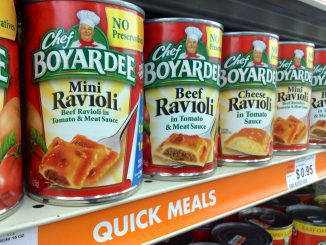
The Tax Cuts and Jobs Act Bill (TCJA) of 2017 is now law. What next?
The first thing every taxpayer should say out loud is this: “It is my money first, not the government’s!”
Every 30 years or so, the American public gets blinded by the promises of progressive government and begin to believe that the government somehow supersedes them when it comes to spending the hard-earned money they earn each and every day.
Before Ronald Reagan routed President Jimmy Carter in 1980, many people had been hoodwinked into believing the federal government could spend their money better than they could. Many believed their tax refund was a “gift” from the federal government each year for some reason.
The Reagan Revolution upset that apple cart for most of the ensuing 30 years. When President Barack Obama took office in 2009, he sought to expand the role of the federal government in virtually every aspect of American life in the aftermath of the Great Crash and Recession and many people believed in the supremacy of government again.
Perhaps things will change now that the average taxpaying family of four may save approximately $2,400 per year due to the TCJA 2017.
One of the first things any taxpayer should do in January 2018 is review their expected income for the upcoming year and make the necessary adjustments to their withholding per pay period in their W-4.
If you do not make the necessary adjustments, you may wind up letting the federal government in Washington use it all as an interest-free loan for the entire year before issuing a refund in April 2019.
It would be quite possible that almost all of the tax cuts you expect to receive will not be passed on to you in the form of higher net take-home pay in a regular paycheck.
Instead, your money would be sent to Washington only to be used to spend on other federal programs until a refund is sent back in the spring of 2019, 16 months from now.
On top of making sure you don’t preclude yourself from getting immediate monthly tax relief from the TCJA of 2017, every family should take a serious look at their last tax refund from the U.S. government and ask this serious question:
“Why in the world did I give the U.S. government an interest-free loan of $3,000 last year?”
The average taxpayer received a refund check from Washington in 2016 for about $3,000. About 110 million taxpayers received a refund check of about $3,000, two-thirds of all taxpayers who filed returns for the previous taxable year.
None of them received any interest for allowing Washington to use their money all year.
The U.S. government sent out $330 billion in total refunds in 2016. That represented a massive $330 billion interest-free loan that funded 97 percent of the federal share of Medicaid for the entire year.
If the average American taxpaying family adjusted their W-4 exemptions upwards to account for the tax cuts and made sure they would get $1 in a refund check in 2019 instead of $3,000, they could expect to see the additional $200/month in tax relief from TCJA 2017 plus another $250 per month from lower withholdings in their monthly take-home pay for a total of $450 more per month in disposable income they could then spend or save as they see fit during the year — not the government.
Getting $450 more per month in regular take-home pay for the average American family is $5,400 more in their pockets over what was there in 2017. That is $54,000 more in disposable income over 10 years available to spend as you see fit during the year — not Washington.
You will be glad you did. Do it for you and your family’s sake.



